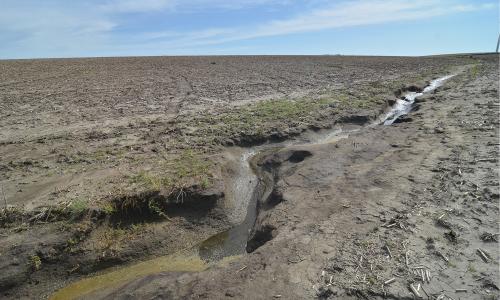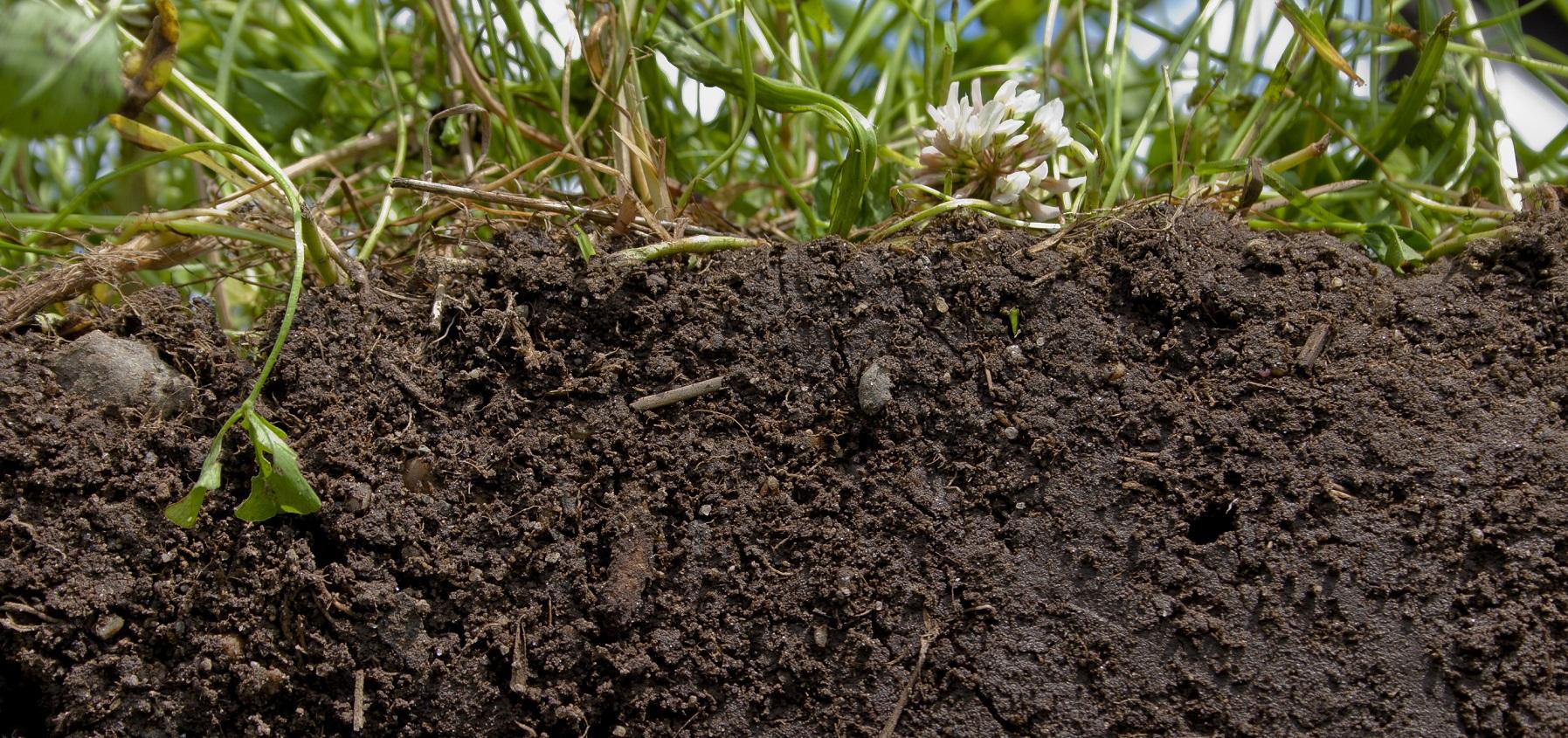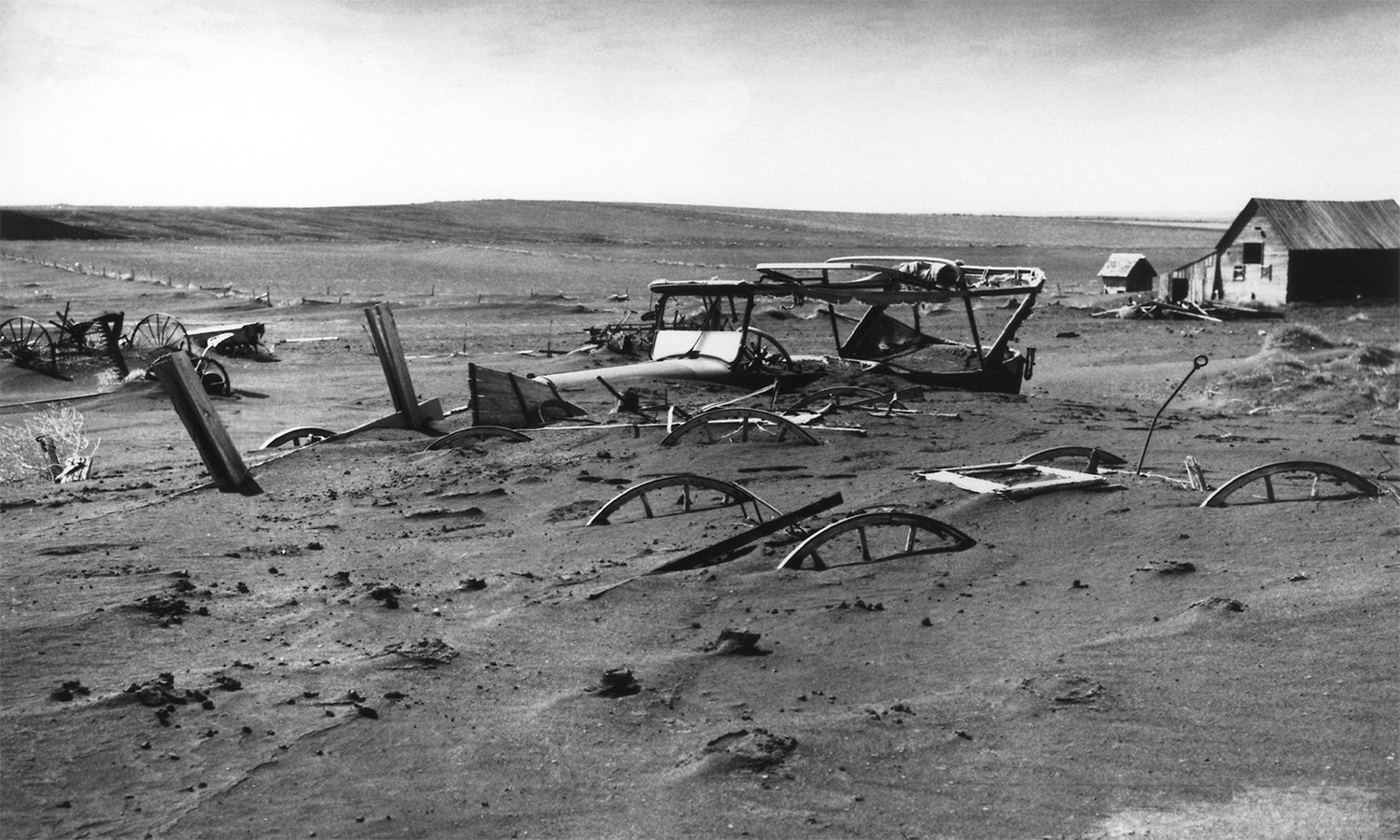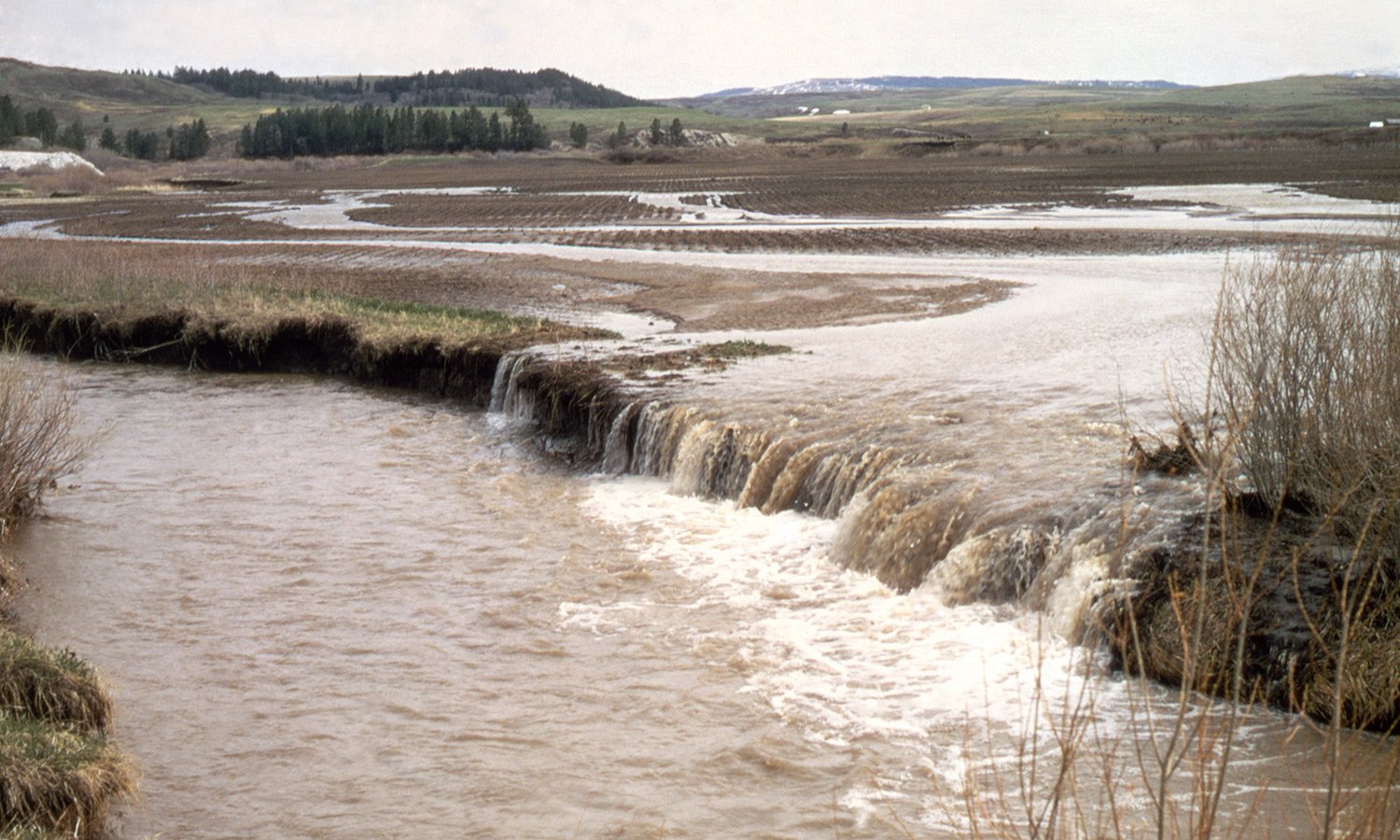Healthy soil is one of the basic life-support systems that humans depend on, like clean air and water. It's the foundation of our food and farm system. Yet this precious resource is being neglected, putting our food and farm future at risk.
Erosion from wind and water annually robs our nation's farms of billions of tons of soil. In fact, US farms are currently losing twice as much topsoil to erosion per year as the Great Plains lost in a typical year at the height of the 1930s Dust Bowl, one of the most devastating agricultural and social disasters in our history.
What does this portend for our food and farm future? Our 2020 analysis, Eroding the Future, shows how continuing along our current path could threaten farming as we know it. And the impacts of climate change will amplify that threat.
The good news is that the same innovative farming practices that can help make our farms more resilient to climate change can also slow the pace of soil loss. It's vitally important that we shift our nation's farm policies to support farmers in adopting these practices.
What healthy soil is—and why it matters
Soil is a living community—an enormously complex ecosystem in which the intersecting activities of plants, animals, and microorganisms like fungi and bacteria combine to create a rich environment for food production.
Healthy soil is marked by its porous, "spongy" texture, produced by root growth as well as the activities of invertebrates such as earthworms and insects. This sponginess allows rainfall to infiltrate healthy soil deeply, making it less vulnerable to floods and droughts because more of the water that falls on it stays in it.
Healthy soils not only make farms more climate-resilient, they can also help keep costs for farmers and taxpayers down in multiple ways:
- The need for costly nitrogen fertilizer is reduced, both because healthy soil is richer in nutrients to begin with, and because improved water retention means less fertilizer lost to runoff.
- Less fertilizer runoff means less water pollution, which reduces cleanup costs for public water supplies and recreation areas downstream from farm areas.
- Even further downstream, less runoff means a reduction in the algae blooms that annually turn huge areas of waterways like the Gulf of Mexico and Chesapeake Bay into “dead zones”, seriously damaging fisheries.
Soil erosion: its causes and impacts
Erosion occurs when soil is displaced by wind or water—washed off farms and deposited in ditches and streams, or blown across the landscape as dust.
Healthy soil resists erosion well, especially if it is protected by plants above ground and roots below-ground year-round (which is one of the reasons why cover crops are so important).
But when soil is left bare and becomes damaged and depleted—dry, compacted, and low in organic matter—then wind and water can more easily displace it. The results can be catastrophic, as the Great Plains region of the central United States discovered in the 1930s. But even small changes year after year can gradually cause big problems.
The Dust Bowl and its legacy
During the early decades of the 20th century, farmers dramatically expanded unsustainable grazing and farming throughout the Great Plains. In particular, farmers encouraged by rising wheat prices in the 1910s and 1920s plowed up millions of acres of deep-rooted native grasses and adopted farming methods that made the soil a sitting duck for erosion. Later, when the Great Depression struck and wheat prices fell, desperate farmers plowed even more grassland.
Then, starting in 1930, a sustained period of severe drought began, putting bare, degraded soil at the mercy of the region's high winds. The resulting dust storms brought widespread devastation, bankrupting farms and forcing an estimated 400,000 people to migrate. Some areas of the Plains remained depopulated and economically depressed for decades to come.
Among many measures taken in response to this ecological disaster, the federal government took steps to improve soil conservation and fight erosion, including the establishment of the Soil Conservation Service, which still exists today as the Natural Resources Conservation Service (NRCS) of the US Department of Agriculture.
Soil erosion today
The federal response to the Dust Bowl, along with other factors such as advances in irrigation, have helped prevent such an obvious disaster from recurring. But erosion remains a serious long-term threat, as wind and water continue to carry off soil faster than it can be regenerated.
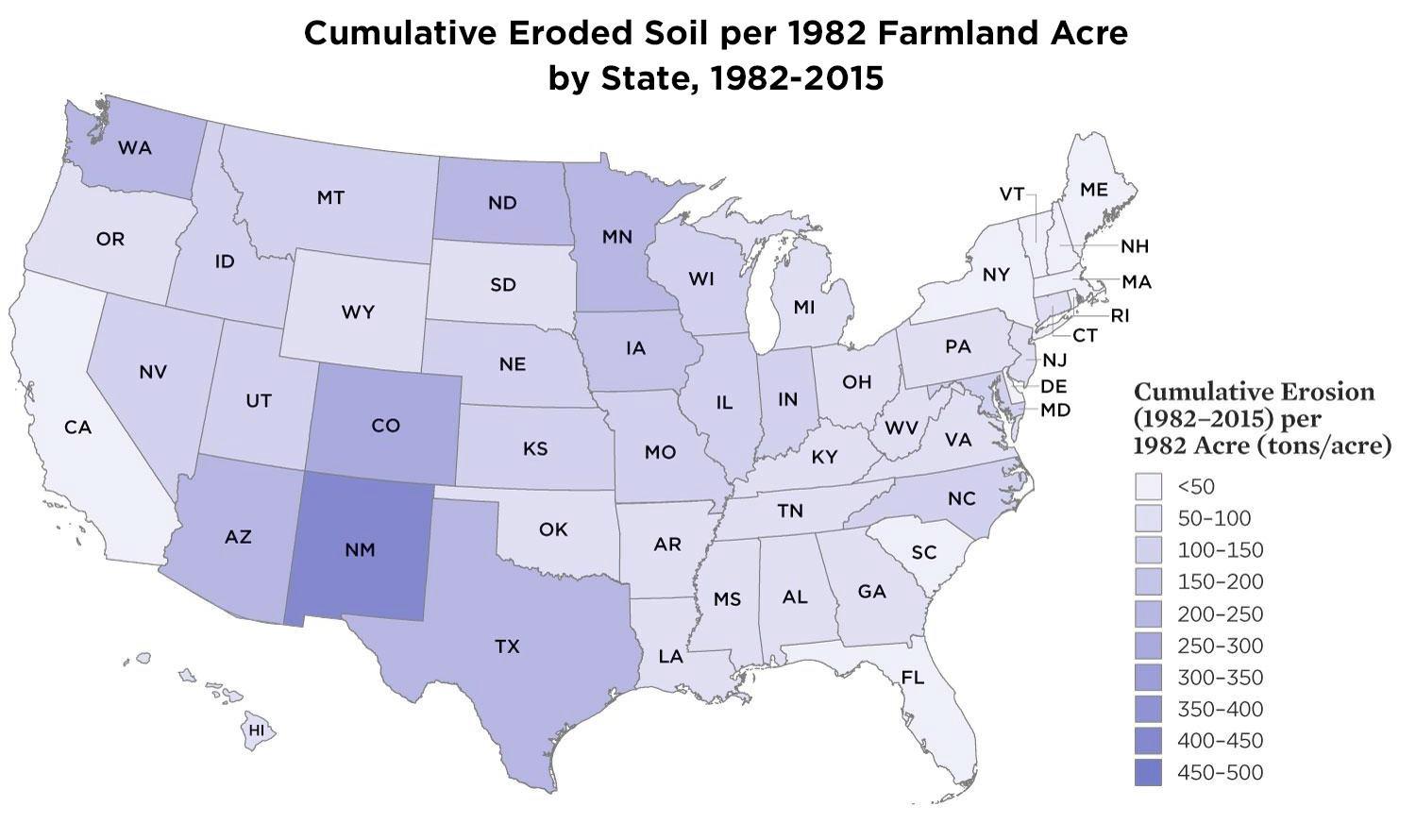
While erosion rates have recently declined somewhat since consistent measurements began in 1982, soil loss continues at a rate that threatens farm legacies. These erosion rates are one of the reasons why, from 1982 to 2015, the area of prime farmland as defined by the NRCS shrank by 25.8 million acres—that's roughly the size of the state of Ohio.
In addition, climate change threatens to amplify erosion impacts over coming decades, as floods and droughts are expected to grow more severe across much of the nation's farmland.
The future of soil in the balance: projecting erosion losses
What can US farmers expect the future of soil to look like? We developed projections for soil erosion over the next 15 years (to 2035) and the next 80 years (to 2100), using three scenarios:
- Pathway 1: Business as usual. In this case, we assumed that erosion rates would proceed at currently reported national average levels.
- Pathway 2: Increased erosion. In this case, we considered the possibility that erosion rates could increase back to their 1982 levels (the highest levels reported in the National Resources Inventory) over the next 15 years, due to a combination of more damaging land management practices, land use change, and exacerbated erosion rates due to climate change.
- Pathway 3: Reduced erosion. For this case, we considered the possibility that increased use of soil health practices could reduce erosion rates by a national average equivalent to the amount reduced from 1982 to 2015 over the course of the next 15 years.
We then extended the projected erosion rates from 2015 to 2100—a century after the initial 1982 measurements—to explore the accumulating impacts of different erosion rates over time.
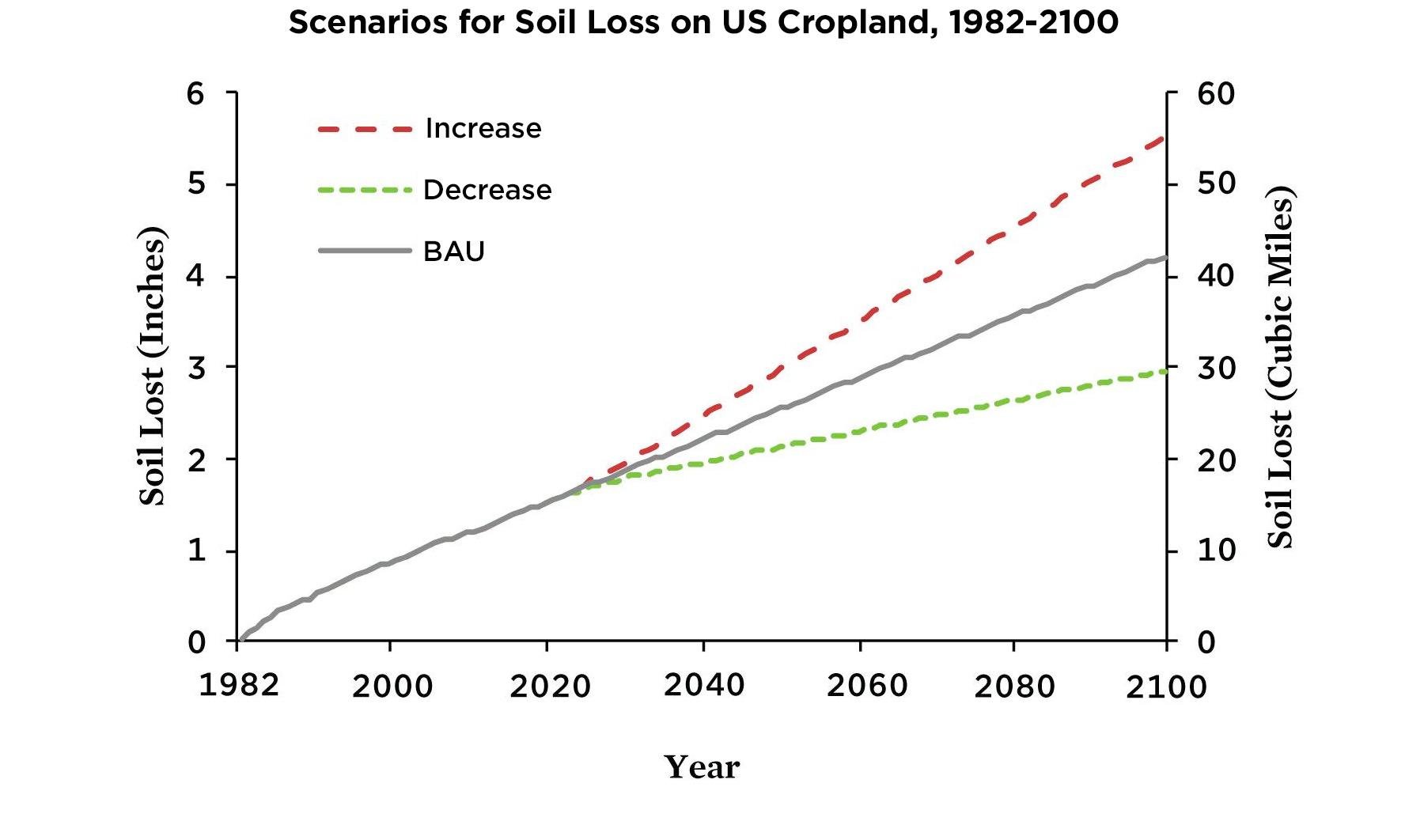
The results of these projections show that cumulative average soil loss on US cropland by 2100 could range anywhere from about 2.5 inches to over 5 inches, with the business-as-usual projection at about 4. By way of comparison, farm soil in Iowa currently averages about 8 inches deep—and that's down from a historical depth of 12 to 14 inches.
In short, we are on a dangerously unsustainable path.
Rebuilding soil: what we can do
The good news is that we know how to slow down erosion and get our food and farm system back on a sustainable track. The key is to scale up farming practices that build and maintain healthier soil. And there are several specific strategies farmers can use to do this:
Plant cover crops. By keeping roots in the ground year-round, cover crops help keep soil in place and maximize its water-holding ability, making it more resistant to floods and droughts.
Diversify crop rotations to help build soil fertility and disrupt pest cycles.
Plant perennials, such as prairie grasses or trees, in or near crop fields to maintain deep living roots year-round—stabilizing soil, drawing carbon deeper underground, and capturing excess fertilizer before it can become a pollutant.
Plow less (or not at all) with low- or no-till farming systems that minimize disturbance and keep moisture in the soil.
While many farmers across the country are already doing some or all of these things, for others, adopting such practices will be a major change in their operations—and change is not easy. It's in everybody's interest to support US farmers in rebuilding soil health and preventing erosion through policies, such as the Agriculture Resilience Act of 2020, that can ensure a transition that benefits all.
